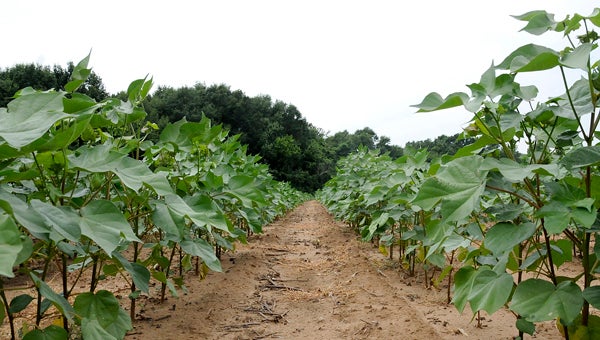High temperatures, lack of rainfall has area in slight drought
Published 10:20 pm Monday, July 2, 2012

As of June 26, more than 88 percent of the state was in at least some form of drought, according to the U.S. Drought Monitor. -- Taylor Holland
High temperatures peaked at more than 100 degrees in June and caused more than just an increase in electric bills. As of June 26, more than 88 percent of the state was in at least some form of drought, according to the U.S. Drought Monitor.
The news isn’t all bad, however, as most of the state is currently experiencing abnormal and moderate droughts, the two lowest levels on the monitor’s intensity scale. Only 1.08 percent of the state — portions of Barbour and Henry County in southeast Alabama— are classified as in an exceptional drought, the highest on the scale.
Willie Datcher, an agent at the Green County Extension Office, said the statewide drought is going to affect Alabama’s small farmers the most, as high temperatures are expected to continue drying up much of their crops.
“At lot of things, like their corn, are going to dry up,” Datcher said. “Ultimately, we’re at the point where the plants aren’t getting enough water at this time. If it continues, these farmers could lose as much as 50 percent of their crop. Some of them may lose more than that if we don’t get some rain pretty soon.”
Corn, cotton, peanuts, soybeans and tomato plants are some of the region’s most affected crops, Datcher and Mobile County Extension Coordinator Jim Todd said. Still, neither expects the drought to drive up prices — at least, not yet.
“It depends on how severe [the drought] gets,” Datcher said. “If it gets much worse, it can drive up price. It all just depends on what their quantity is like. If they have a large quantity, they may be able to keep the price down. It’s all a matter of supply and demand. If you’re the only person that has something, you can kind of raise the price a little bit. It may not affect the price too much though. It all just depends how much the farmers around the state have.”
“The crops that we have in this area, and the entire state really, really aren’t enough to affect prices,” Todd said. “But if you start spreading that out to the Southeast and over into Georgia, then you’ll start seeing an affect on price.”
In comparison to last year’s drought, however, 2012’s dry conditions aren’t as severe.
At this point last year, more than 96 percent of the state was experiencing at least some kind of drought. And of that number, more than 11 percent of the state was in an exceptional drought — more than 10 percent higher than current exceptional drought conditions.
“It’s hard to tell what kind of effect an early drought is going to have,” Todd said. “If it continues, it will be pretty devastating.”
The next set of numbers calculated by the U.S. Drought Monitor will be released Thursday, and members of the Office of Water Resources say they are continuing to monitor conditions statewide.
“Recent rains have improved conditions in most areas of the state, but provided minimal long-term benefits,” the latest Alabama Drought Declaration, released Monday, said. “In addition, forecasts are calling for extremely high temperatures and limited rainfall over the next few weeks. There are growing concerns that higher temperatures, diminishing stream flows and declining groundwater levels indicate the quick return of very dry conditions.”





